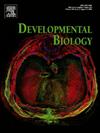The three-dimensional structure of medullary bone: Novel criteria for the identification of avian sex-specific bone tissue
IF 2.5
3区 生物学
Q2 DEVELOPMENTAL BIOLOGY
引用次数: 0
Abstract
Medullary bone is a fast-growing, ephemeral bone tissue found inside the bone cavities of female birds. Identifying this tissue in the bones of fossil avian and non-avian dinosaurs has the potential to determine which specimens represent reproductively mature females. However, difficulties in distinguishing medullary bone from superficially similar bone pathologies has led to uncertainty as to whether some specimens previously thought to contain medullary bone instead represent sick or injured individuals. The most frequently mentioned of these pathologies is avian osteopetrosis, a virally-induced condition in birds causing bony lesions which can resemble medullary bone. Lists of criteria, primarily using two-dimensional osteohistology, have yet to form a comprehensive framework through which all medullary bone can be positively identified, and all pathology excluded. Here, we use high-resolution computed tomography (μCT) to characterise the three-dimensional structure of medullary bone in modern birds for the first time and make comparisons to the endosteal lesions of avian osteopetrosis. We identify both qualitative and quantitative features which we suggest to be characteristic of medullary bone, including connectivity density and osteocyte lacunar orientation, and highlight conspicuously variable features which require further investigation. We find several three-dimensional which can be used to differentiate between medullary bone and avian osteopetrosis, including structural anisotropy and trabecular thickness. These three-dimensional characters can be added to the growing framework of criteria to identify medullary bone in the fossil record and thus help determine the sex of dinosaurs.

髓质骨的三维结构:鉴定鸟类性别特异性骨组织的新标准。
髓质骨是在雌鸟的骨腔内发现的一种快速生长的、短暂的骨组织。在鸟类和非鸟类恐龙化石的骨骼中识别这种组织有可能确定哪些标本代表生殖成熟的雌性。然而,在区分髓质骨与表面相似的骨病理方面的困难导致了一些以前被认为含有髓质骨的标本是否代表生病或受伤的个体的不确定性。这些病理中最常提到的是鸟类骨质疏松症,这是一种病毒引起的鸟类骨骼病变,类似于髓质骨。标准列表主要使用二维骨组织学,尚未形成一个全面的框架,通过该框架可以积极识别所有髓质骨,并排除所有病理。在这里,我们首次使用高分辨率计算机断层扫描(μCT)来表征现代鸟类髓质骨的三维结构,并与鸟类骨质疏松症的骨内病变进行了比较。我们确定了髓质骨的定性和定量特征,包括连通性密度和骨细胞腔隙取向,并强调了需要进一步研究的显著变化特征。我们发现了几个可以用来区分髓性骨和禽类骨质疏松症的三维指标,包括结构各向异性和骨小梁厚度。这些三维特征可以添加到不断增长的标准框架中,以识别化石记录中的髓骨,从而帮助确定恐龙的性别。
本文章由计算机程序翻译,如有差异,请以英文原文为准。
求助全文
约1分钟内获得全文
求助全文
来源期刊

Developmental biology
生物-发育生物学
CiteScore
5.30
自引率
3.70%
发文量
182
审稿时长
1.5 months
期刊介绍:
Developmental Biology (DB) publishes original research on mechanisms of development, differentiation, and growth in animals and plants at the molecular, cellular, genetic and evolutionary levels. Areas of particular emphasis include transcriptional control mechanisms, embryonic patterning, cell-cell interactions, growth factors and signal transduction, and regulatory hierarchies in developing plants and animals.
 求助内容:
求助内容: 应助结果提醒方式:
应助结果提醒方式:


